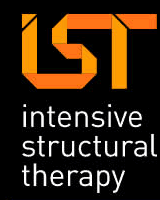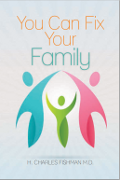IST Outcome System:
- IST Clinical Scorecard (ISTCS)
- Token economy points
- IST-Triangulation or IST-Single Parent Scale
- Turning the Curve
The IST-Triangulation Scale and the IST-Single Parent Scale
Tracking outcomes is crucial for clinical work.
The question is, however, when you have someone in therapy, what markers do you utilize to gauge the probability that the problem will not recur? In the area of troubled adolescents, one needs to have markers that are family based.
In my clinical experience, the family dynamic most central to whether young peoples presenting problems will continue ameliorated after discharge is triangulation in the case of two parents (i.e., the degree to which the young person is “caught” in the middle between two disagreeing parents), and, in the single parent home, it is family dysfunction and isolation of the single parent (i.e., the degree to which the parent lacks support) the leads to a re-exacerbation of the behavioral problems.
To the extent to which triangulation is not decreased, follow-up outcomes are poor.
Similarly, with single parents, the extent to which family dysfunction continues and there is inadequate support for the parent, follow-up outcomes are poor.
These two measurement tools specifically track these crucial patterns with grounded observable data: the Triangulation Scale and the Single Parent Support Scale.
Turning the Curve
RBA utilizes the tool “turning the curve” which tracks performance over time.
Success is defined as turning the curve in a positive direction from baseline. By using the concept of turning the curve, clinicians are able to track the progress with individual clients, and by using a report of aggregated outcomes scores, the progress of organizations can be tracked. This is a clear and easy way to measure clinical progress.
Conclusion
It is crucial to have a model with grounded, observable interactional patterns. Indeed, many systems exist that measure outcomes on the basis of subjective answers to questionnaires.
These tools do not utilize the great advantage of family therapy – the observable nature of family interactions. These interactions are usually not under self-conscious control unlike subjective responses to questionnaires.
The IST-Single Parent Family Scale
In single parent families of troubled young people, there often tends to be a poor boundary between the generations – the single parent doesn’t have has the authority to enforce a generational boundary. Some other essential tenants of this therapy are confirming the parent’s sense of self. The individual has to be a person first, and then a parent. This is done by transforming the homeostatic maintainer that is undermining her or his authority. The therapist uses the tool of re-contextualisation, bringing and recruiting supports to enhance the single parent’s authority.
1. To what extent has there been work to ascertain the homeostatic maintainer?
- never
- rarely
- sometimes
- often
- always
2. To what extent has there been work directed to transform the homeostatic maintainer?
- never
- rarely
- sometimes
- often
- always
3. To what extent has there been work towards re-contextualisation: finding contexts to support the positive aspects of both the children and the parent (e.g. finding employment, training, healthcare….)
- never
- rarely
- sometimes
- often
- always
4. To what extent has there been work with specific sub-systems (e.g. extended family, school, CYFS) to bolster and support the parental system?
- never
- rarely
- sometimes
- often
- always
5. To what extent has there been work to intervene quickly — seeking to create positive systemic changes ASAP?
- never
- rarely
- sometimes
- often
- always
6. To what extent has there been a diligent search for areas of strength, areas of competence in the family and family members?
- never
- rarely
- sometimes
- often
- always
7. To what extent has the team worked to coordinate supports for the family in their community-professional and non-professional contexts so the parent feels adequately supported?
- never
- rarely
- sometimes
- often
- always
Total score: ___________
Applying the therapist’s use of self:
At times the therapist may need to use his or her self to be a support for the parent. This is done in the transition to finding more permanent family and community supports.
IST-Triangulation scale
1. To what extent are the parents willing to sit in a room together?
- never
- rarely
- sometimes
- often
- always
2. To what extent are the parents able to come to an agreement on a single point regarding their child?
- never
- rarely
- sometimes
- often
- always
3. To what extent do the parents support one another in their expectations for their child’s behaviour?
- never
- rarely
- sometimes
- often
- always
4. To what extent do the parents actively resisted triangulating their child?
- never
- rarely
- sometimes
- often
- always
5. To what extent do the parents refrain from recruiting others into their conflict?
- never
- rarely
- sometimes
- often
- always
6. To what extent are the parents able to agree on a specific consequence and confront their adolescent?
- never
- rarely
- sometimes
- often
- always
Total score: _________


